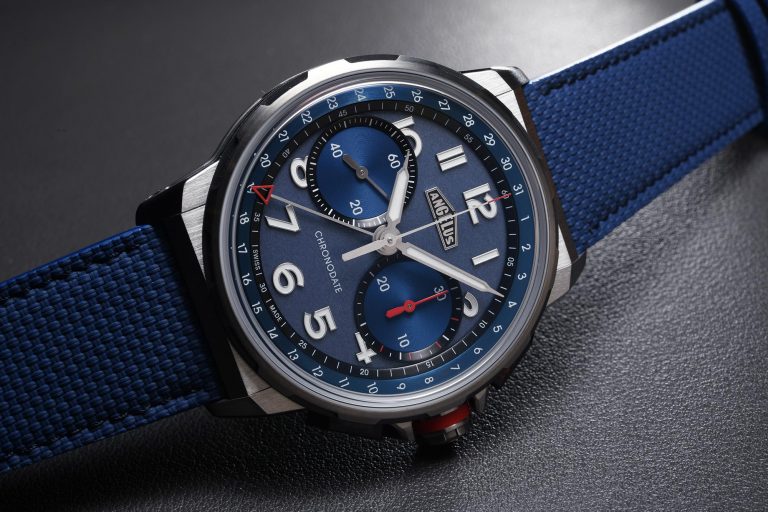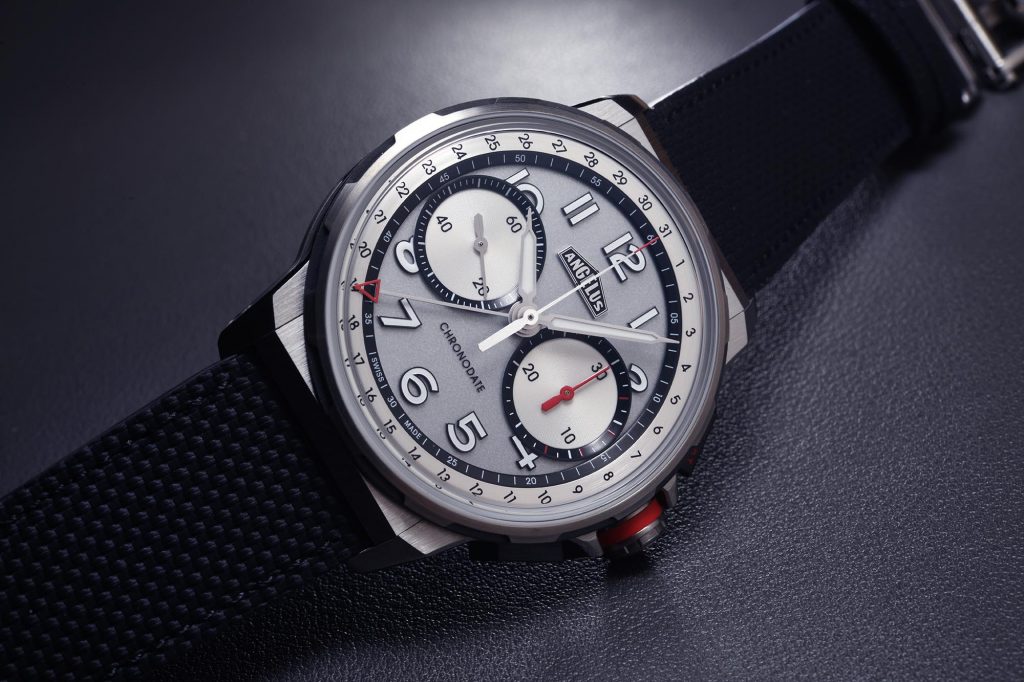
As far as the sports chronograph goes, the industry is filled with so-called icons – some for racing, others are more known for their adventurous natures. Angelus however, has undergone a resurgence in the last few years, and has introduced an icon of its own – the Chronodate. A model that carries the history of Angelus, the modern Chronodate is thoroughly contemporary with a sporty appeal that brings the brand firmly into the present.
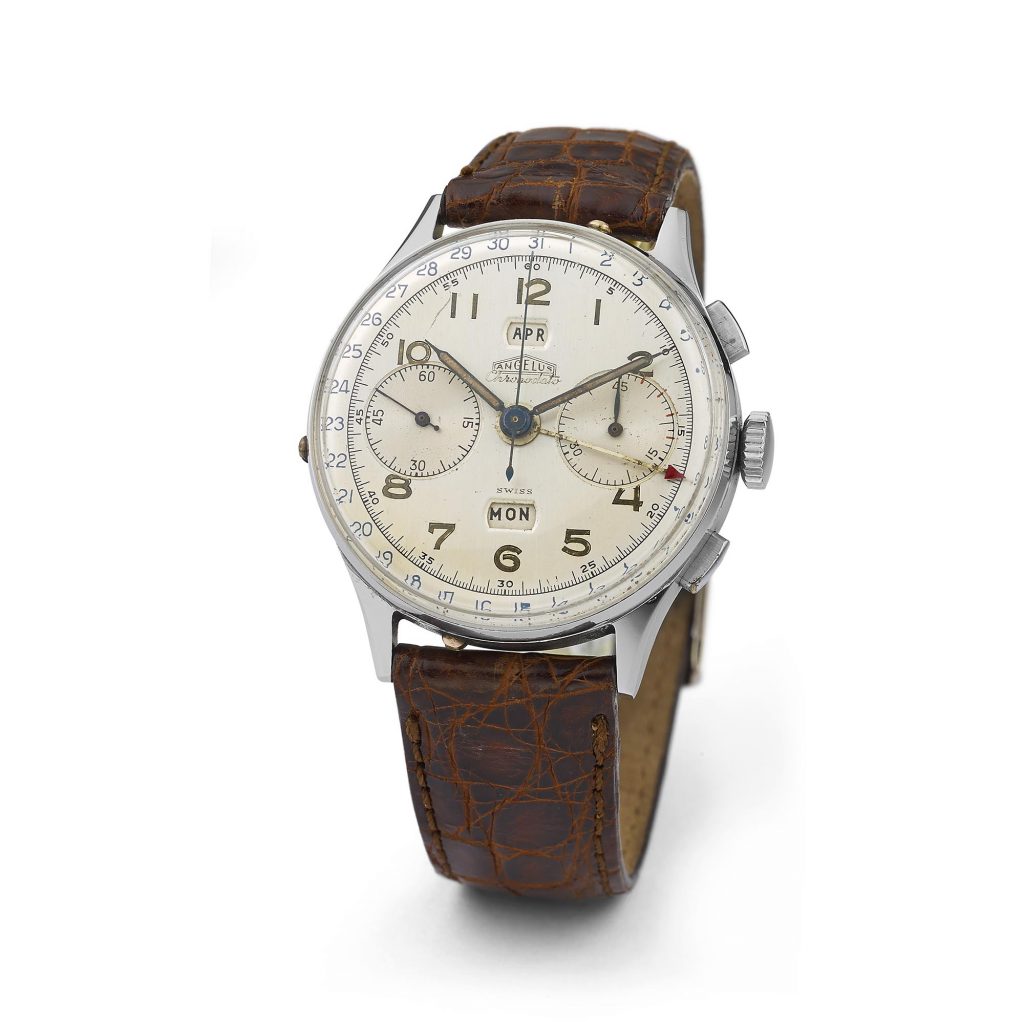
The heyday of Angelus can be traced to the early to mid 20th Century, where they created movements for wristwatches, as well as 8-day travel clocks, with their movements being famously adapted into wristwatches for the Italian Navy. In 1942 Angelus released the Chronodate – the first chronograph with a calendar function. These watches would also feature day and month in apertures at 6 and 12 o’clock.
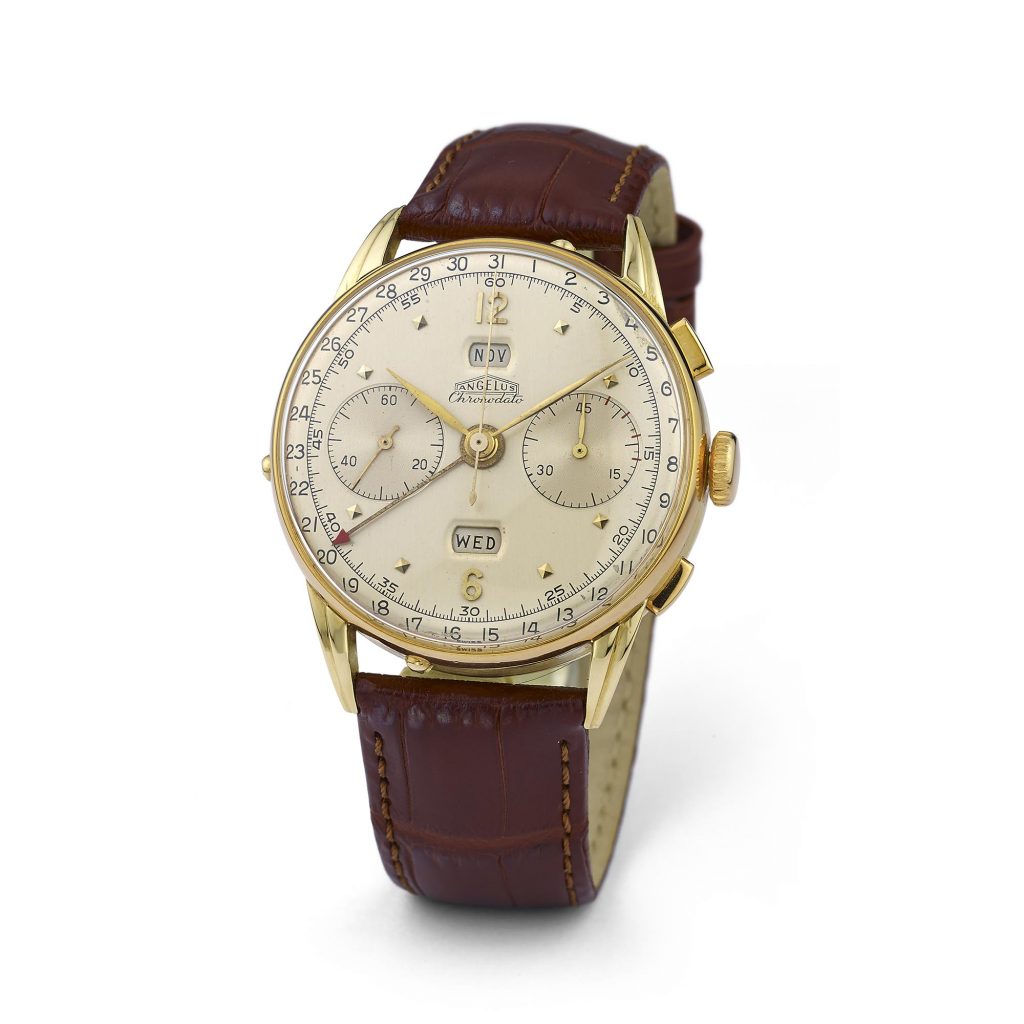
The Chronodate marked the first production chronograph that featured a calendar, and went on to become an iconic chronograph from Angelus – fervent collector appreciation for these original Chronodate watches (renamed Chronodato in 1943) is present in vintage enthusiasts, and it holds a very special place in the hearts of collectors from a historical perspective.
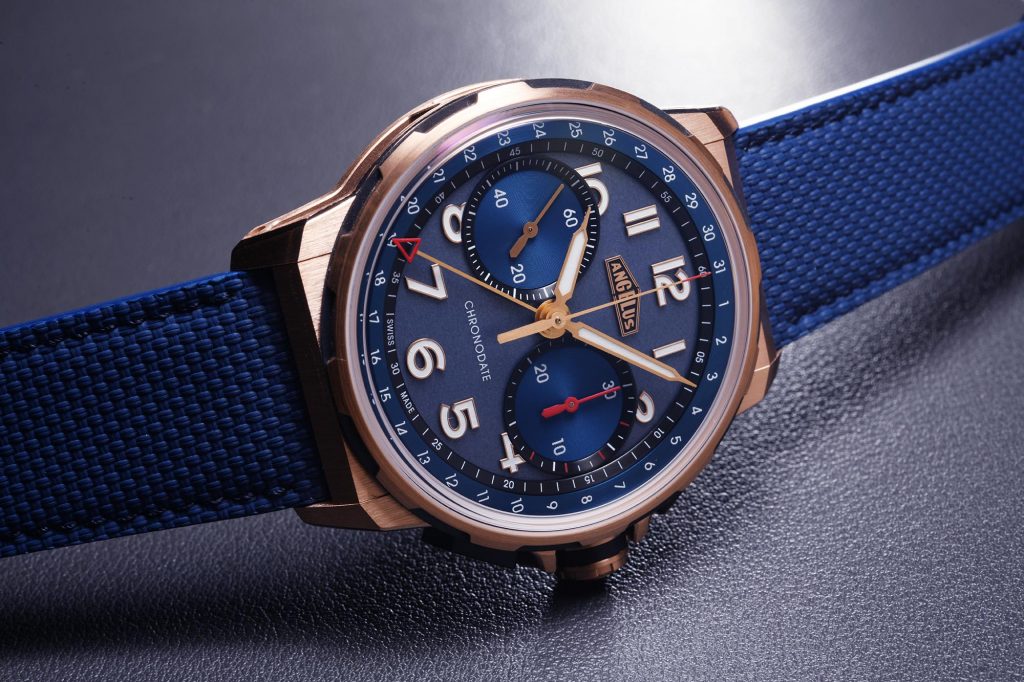
The modern Angelus Chronodate adheres to the codes of the original model, with the calendar displayed on the periphery of the dial, and indicated through a central hand with a red-tipped arrow. It also features a bi-compax chronograph display, with running seconds and minutes at 9 o’clock and 3 o’clock respectively. This however, is where the similarities end with the original 1942 model – gone are the day and month apertures, which cleans up the dial considerably.
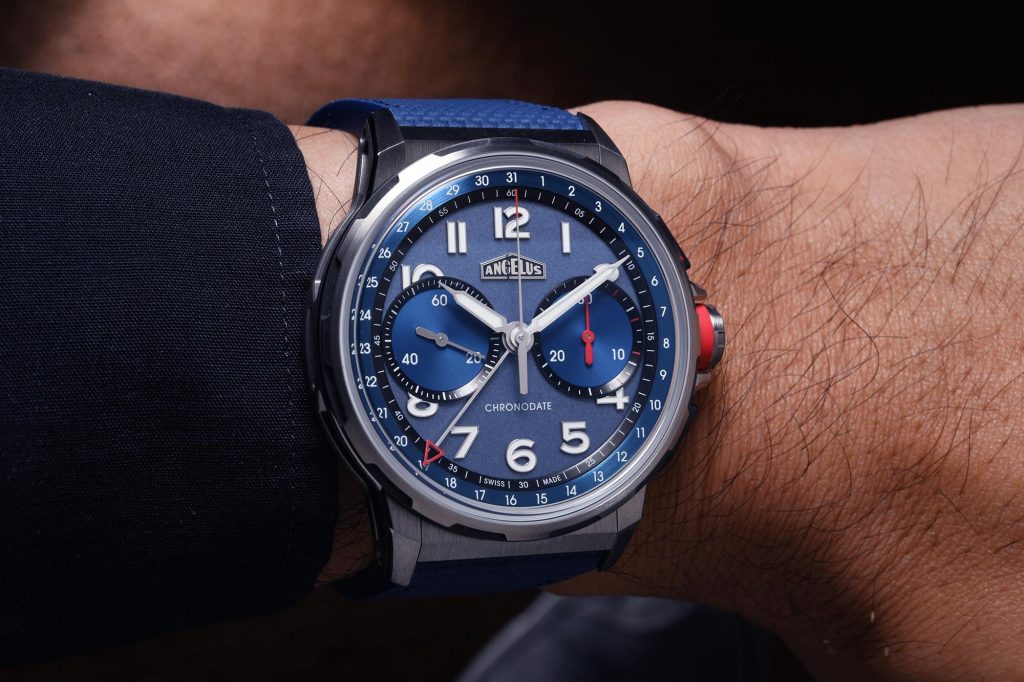
The case measures in at 42.5mm and is hewn from titanium or red gold – its modular construction enables a carbon composite container to house the dial and movement. Sporty chronograph pushers made of carbon are also modern in their appearance with engravings of start, stop and reset on the sides and top of the pushers. The watch is available with a rubber strap or a titanium bracelet, which is minimalistic in appearance, yet bold with its strong horizontal lines.
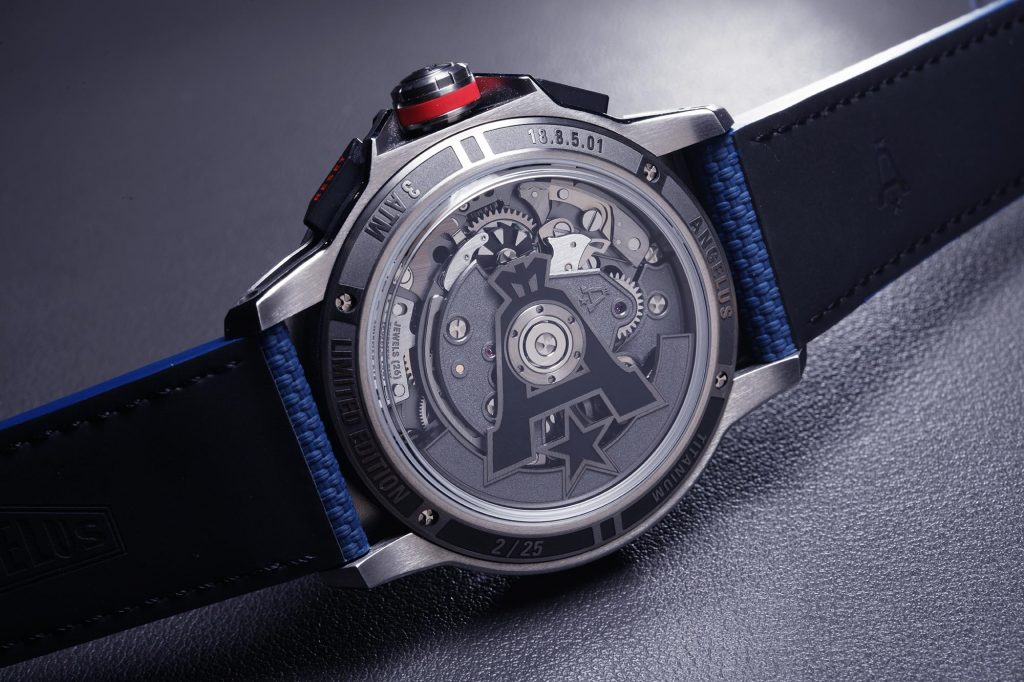
Housed within the modern titanium and carbon composite case is the A500 chronograph movement. With La-Joux Perret at the helm of manufacturing the movements for Angelus, the brand has a great stable of engineers to draw from to have an exceptional movement. In the case of the Chronodate, the A500 movement is a column wheel controlled chronograph, equipped with a vertical clutch for jitter-free chronograph operations. The movement also beats at 4Hz, and is capable of 60 hours of autonomy.
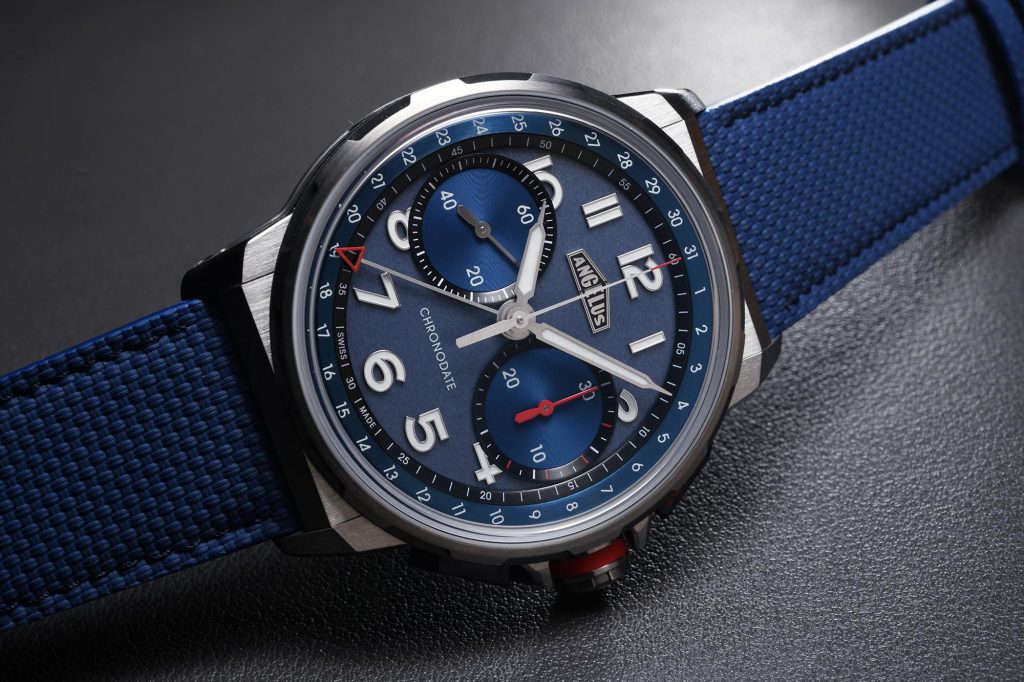
The Angelus of today is definitely not the Angelus of the mid 20th Century. Whilst this may have some purists shaking their fists at management, it is not always good to be entirely copying from the past. While Angelus has had its moment of vintage re-issues through the collaboration with Massena Lab, its great to see that Angelus is balancing heritage with modernity in its flagship Chronodate model. This is a model that happily straddles this line, and we can only hope that the Chronodate line continues to be modern and contemporary for fans of the brand.


